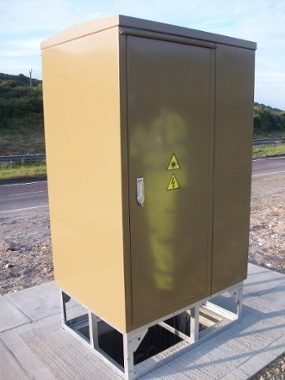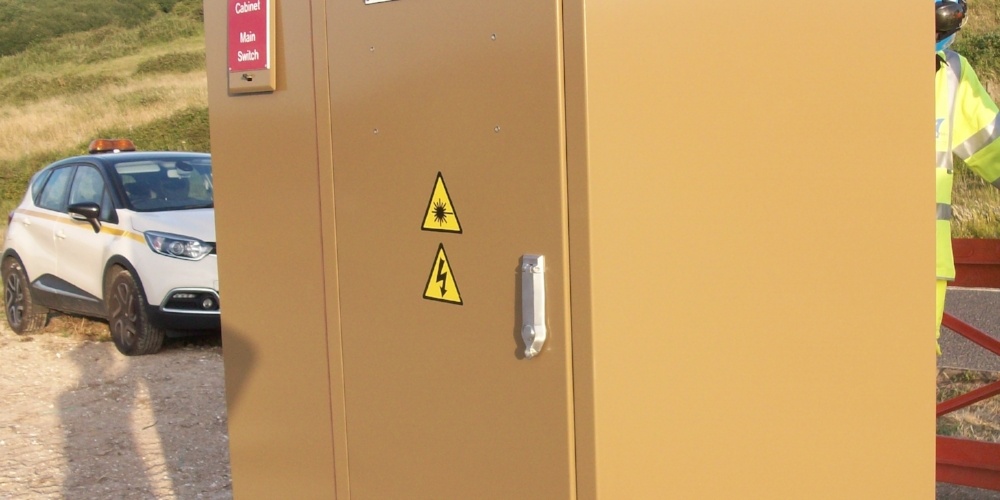While we can all agree that electrical enclosures are not the most appealing of objects to look at, they certainly sometimes find themselves in the most beautiful of places.
Not long ago, here at ICEE we found ourselves working on a project situated in a National Trust area close to Dover deemed of outstanding natural beauty. We were tasked by our client to manufacture 8 cabinets for the A20 Highways Scheme. Due to the fact that this was a protected area we needed to jump through a few small hoops to make our client happy and meet their unique enclosure requirements, enabling them to reduce infrastructure, increase efficiency, while at the same time maintaining the beauty of the surroundings.
Here’s what we did for them…
The project
We all very often come across roads that have multiple electrical enclosures scattered along them. You can rest assured that they can either fit in far more equipment than what’s actually contained in them or they are bursting at the seams. This is often due to expansions and the addition of components, or because enclosures have been purchased off the shelf and the size or types offered were unable to meet the specific requirements of the kit hosted in them.
 This is especially the case for projects, like the one we were working on, where that much equipment is required for the operation, there would be an electrical cabinet installed and a couple of other cabinets to cater for the remaining part of the equipment, therefore, increasing the footprint and cost of the project, as well as the infrastructure.
This is especially the case for projects, like the one we were working on, where that much equipment is required for the operation, there would be an electrical cabinet installed and a couple of other cabinets to cater for the remaining part of the equipment, therefore, increasing the footprint and cost of the project, as well as the infrastructure.
However, for this project, this was simply not an option and we needed to put our thinking caps on, expertise into practice and come up with a solution that would not only reduce infrastructure and street furniture clutter by reducing the use of several electrical enclosures to only one, but also create a product that would match the surroundings.
What we did?
The solution was easy, our Combined Equipment Cabinet (CEC), which is the only MCE1227 highways specification approved cabinet of its kind on the market, was without a doubt the perfect product for the project, as it was the right size to house all the equipment in only one enclosure in the most efficient manner.
To be able to achieve this right the first time, we collaborated with NAL Ltd, who were supplying the signage electrical disconnection system for our client. NAL’s Safety Isolation System (SIS) is specifically designed to meet EN12767:2007 in its requirements to completely electrically isolate a roadside structure in the event of a collision. Usually this type of system is installed in a dedicated pillar, therefore, this was the first time that both ICEE and NAL have installed the equipment in an enclosure, the success of which laid on the expertise and high level of knowledge of both companies.
The internal layout of the cabinet had to be adapted by our design team to accommodate the street lighting equipment, the signal kit, all cables coming in and out of the cabinet and any other standard highways equipment. The electrical bay was re-wired and PDUs sent to NAL to populate the racks, which was then sent back to us to be fitted in the cabinet.
If you’re thinking by now, how long did all this take, the answer is only two weeks, as the deadline for the whole operation was quite tight.
Were there any additional benefits?
People tend to get put off by custom electrical enclosures, especially those manufactured in the low numbers, as they think they would cost a lot. While a lot of organisation are set up to manufacture only in large batches, here at ICEE, we have the in-house resources and ability to fabricate any metal cabinet within your specified budget.
For this specific project, there were a number of other benefits as well, including:
Maintenance:
As there was a range of different equipment that needed to be installed, incorporating everything in the same cabinet meant that there was going to be only one point of maintenance, as opposed to having cabinets scattered along the road;
 Reducing infrastructure:
Reducing infrastructure:
If you can incorporate more equipment in one cabinet and can get away with not having two, three, etc. enclosures will, obviously, be aesthetically better if that was a requirement. Not only this, but it will also reduce footprint and any related installation costs, such as civil works;
Safety
From a safety point of view, having less cabinets on the roadside means that the chances of them being impacted by a vehicle are a lot less.
As you can see, having a custom enclosure made for you can bring with itself many benefits, of course, if it came along with the necessary expertise and price tag. Two things that we can certainly guarantee, here at ICEE.
Our CEC cabinets can be used in various applications across industries. Some of the projects we have previously fabricated, supplied and installed this type of cabinet include:
- M42 (pilot scheme) Junctions 3a to 7
- M42 Junctions 8 to 11
- M1 Junctions 10 to 13
- M6 Junctions 8 to 10A
- M4 Junctions 19 to 20
- M5 Junctions 15 to 17
- M62 Junctions 25 to 30
- A14
- Bell Common Tunnel M25
- Homesdale Tunnel M25
- 4th Bridge replacement Scheme
Click here to find out how we can help you make your project more efficient and reduce its costs.

